Does this legacy publisher translate from print to online?
With so many newspapers going out of business, how has the Wall Street Journal not only survived but thrived?
WSJ has made the transition from print to online publishing look easy. What’s the secret to their success? Is this a business model you too can follow?
There are four criteria that define a successful Mequoda System Publisher:
- Content Driven – publish new content via a periodical website and an email newsletter on a regular frequency
- Google Friendly – make the periodical website organized, tagged and easy for Google to find and index
- Email Centric – priority one is to build a permission based email subscriber list through at least one free email newsletter
- Multi-Platform Content- 3 R’s: reuse, recycle and repurpose content through a minimum of 3 media platforms, with at least one premium product
WSJ.com offers up robust content to satisfy the massive traffic it receives every month. The abundance of inbound links and keywords add to their successful SEO.
Traffic and Keywords from Compete.com, Pages and Links from Yahoo! Site Explorer
What is the Mequoda Media Pyramid?
The Mequoda Media Pyramid is the core of every Mequoda System. The pyramid provides a system for organizing content to maximize profit. Various media products have a natural hierarchy in terms of price, content and trust.
You create many products in many formats and pull customers up the media pyramid, thereby, increasing profit. That is the essence of the Mequoda Media Pyramid.
[text_ad]
Brand Building
WSJ.com is a Periodical Website and Membership Website making it a Periodical Website Hybrid. It can be confusing, as the average user may have a hard time understanding what is free and what is paid. Only about 15% of their content is free, the other 85% is premium content for members only.
WSJ has expanded its brand online to become the Wall Street Journal Digital Network. The US market is comprised of five separate websites WSJ.com, Market Watch, Barron’s, All Things Digital, and Smart Money.

Wall Street Journal Global Network Navigation
The five nameplates shown in the Global Network Navigation are the five primary US sites in the network. We love the consistent top navigation bar, so no matter which of the five sites you visit, it remains the same. This lends to the branding of each of these sites individually as well. The WSJ Digital Network also includes a dozen additional international sites all listed in the bottom site map.
To demonstrate how strong the WSJ brand has become, this small advertisement caught our attention:
WSJ now offers an exclusive wine club, where members receive a case of wine every 3 months.
While they make it clear it is a separate entity from the news department, they are counting on the strength of the WSJ brand to carry off this totally unrelated venture. When your brand is so strong and well known, sometimes you can veer off the beaten path and diversify with success. Now that’s thinking outside the box, no pun intended.
How Many Levels in the WSJ Digital Media Pyramid?
What does Wall Street Journal’s Media Pyramid look like? What medium does each level of the pyramid include?
7. Live Events: Seminars, conferences & summits.
Example: WSJ Executive Conference – an exclusive, invitation-only conference of the world’s most influential leaders to discuss with global experts the most pressing topics of our time. This year’s attendees included Eric Schmidt, Chairman and CEO, Google; Peter Darbee, Chairman, President and CEO, PG&E; Václav Klaus, President, Czech Republic and President, European Union; Al Gore, Chairman, Alliance for Climate Protection and Anne Mulcahy, Chairman and CEO, Xerox Corporation.
The D Conference – the industry’s top players gather for informal but pointed conversations about the impact digital technology will have on our lives now and in the future. This years speakers included: Mark Cuban, Chairman of HDNet and Owner of the Dallas Mavericks, Landmark Theaters and Magnolia Pictures; Arianna Huffington, Editor-in-Chief of the Huffington Post; Carol Bartz, CEO of Yahoo; Biz Stone, Co-Founder of Twitter; and Jeff Zucker, CEO of NBC Universal.
Barron’s Winner Circle Top Women Advisors Summit – an elite gathering of the nation’s pre-eminent female financial advisors.
6. Memberships: Associations, clubs, libraries, directories, forums, classifieds, hosted software applications & databases.
Example: WSJ Online Edition

SmartMoney Magazine
5. Subscriptions: Newspapers, magazines, podcasts, newsletters & loose-leafs.
Example: WSJ Print Editon – good old black and white
WSJ Kindle Edition – read anytime, anyplace
WSJ Podcast – digital subscription of “WSJAM” for your listening pleasure available through iTunes (learn more about how The Wall Street Journal embraces podcasting)
Barrons.com Daily Stock Alert – Daily investing newsletter from the editors of Barron’s Online
SmartMoney – The Wall Street Journal Magazine discusses stocks, personal finance and mutual funds
4. Virtual Events: Audio conferences, online seminars, webinars, webcasts, radio & TV.
Example: WSJAM – 5 radio programs including the popular “WSJ This Morning” which broadcasts live on various local stations
3. One-Shots: Online store with books, reports, seminars, training, & software.
Example: WSJ Books – They publish Wall Street Journal-branded books by their own writers and editors that reflect their reputation as the authoritative source for business information. Titles include nonfiction narratives, easy-to-use service guides and anthologies of popular Journal features.
Archive Search – While keeping their eyes on the future, they haven’t forgotten their past. If you’re looking for an older article, check out this great archive feature: “Search Wall Street Journal articles older than 1979 for just $4.95 per article. Separate registration with ProQuest required. Articles, including their accompanying photos, charts and graphs, may be purchased in PDF format.”
2. Free Email Newsletters: High-frequency, single-story or multiple-story summary.
Example: WSJ Email Center – user friendly with many choices to customize including Breaking News Alerts, Market Data Alerts, Columnist Emails and Journal Perks.
1. Free Periodical Websites: Content-driven, Google-friendly & email-centric with free content
Example: WSJ.com – continually updated 24 hours a day to provide up-to-the-minute news in business, government, technology, marketing, the law and more
MarketWatch.com – market conditions and stock quotes with real-time data
Barrons.com – America’s premier financial magazine, renowned for its market-moving stories and in-depth reporting
AllThingsD.com – devoted to news, analysis and opinion on technology, the Internet and media
SmartMoney.com – investment and financial advice, tips and tools
Below the 7 levels is the Golden Foundation of organic (free) media links & mentions:
Example: Other Peoples Media – Search engines, referring websites, email pass along, podcasts, television, radio, newspapers, magazines, books, newsletters, public events and personal referrals.
Podcasts are digital subscriptions, and not all subscriptions are paid. You’ll notice that WSJAM’s broadcast is a live digital media event, while the podcasts are available as a digital subscription. They are two truly different products. The content is the same, but the method of delivery is different, once again showing that WSJ is a best practice example of the 3 R’s: recycle, reuse and repurpose content.
The Wall Street Journal has at least one compliment for every level of the Mequoda Media Pyramid. Therein lies the secret to their success. Instead of putting all their eggs in one basket, they have diversified to become a multi-platform media empire and a Mequoda System best practice example.
There’s Always Room for Improvement
Here are 3 things the WSJ.com could do to improve system performance and increase online revenue:
1. Email Newsletter Subscriber Acquisition:
We believe job number one of a website should be to build a free email subscriber database. The only conversion architecture we found above the fold on the homepage is the “Register for FREE” button that appears on the upper right side of the navigation bar.
WSJ.com could dramatically increase its ECR (Website Visitor Email Conversion Rate) by using Floaters, OFIEs, OFINs and RCLPs to build WSJ’s free email subscriber database, which would in turn drive paid product sales and advertising inventory. As of this writing, an unknown user can not even reach the well-crafted WSJ Email Newsletter Center to see, much less sign-up for, the email newsletters available to free and paid members (pictured here).
2. Free User and Unregistered Visitor Exposure to Premium Content: While Mequoda System Best Practices suggest that a free periodical website and premium membership website function best when accessed by the user as two discreet sites, many legacy publishers use the free and premium hybrid model used by WSJ.com.
The WSJ implementation does a poor job of exposing the free user to premium content. Free articles should, at the minimum, include related article links to both free and premium content with the premium content clearly labeled as premium content available only to premium members.
Other than the orange and white “The Online Journal” subscribe button displayed on the top right side of the free user and unknown user nameplate, free and unknown users get no exposure to the concept of premium WSJ content being available.

WSJ Unkown User Home Page
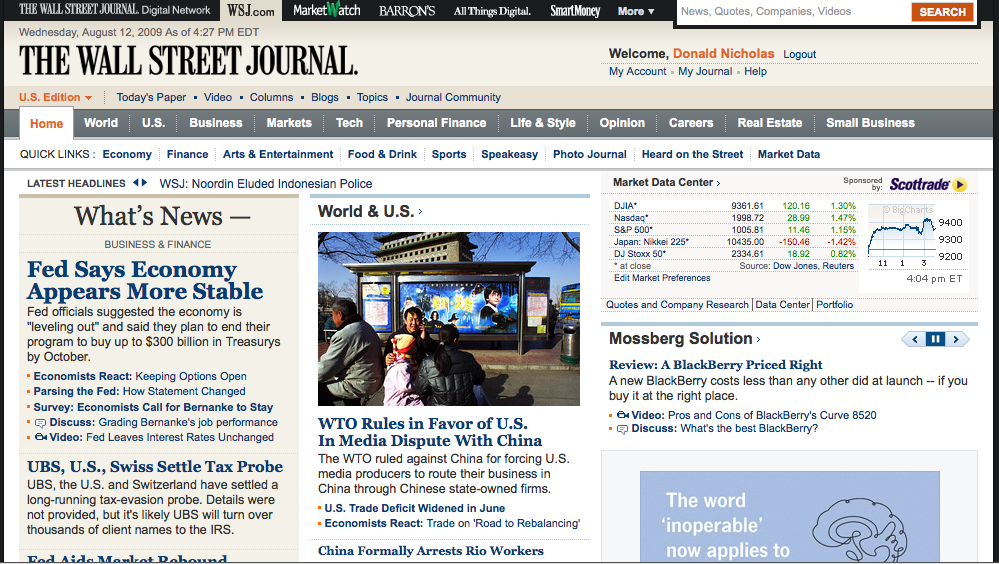
WSJ Member Home Page
Note: See the new Ragan.com periodical website for a best practices example of how to execute the free and paid Periodical Website Hybrid content strategy.
3. An Easy to Find Bookstore & Event Marketplace: If there was one thing WSJ.com could do to improve revenue, it would be to improve the exposure to their one-shot paid products. While they have them, they are not easy to find. We couldn’t find a product page or store link, not even on the universal site map. A visitor may just happen upon the book section or special reports list.
But, what if a friend or colleague recommends something they purchased from WSJ? If you haven’t received a link to it or know the exact title, you may have difficulty locating it on their site. It would be nice to see each of the 5 websites in the WSJ Digital Network have their own product or store page for easy access. Another possibility would be a bookstore tab in the top navigation bar, like Mequoda Daily (pictured here).
Conclusion
The Wall Street Journal has done an excellent job of building its brand online. WSJ utilizes every level of the Mequoda Media Pyramid. With the few adjustments mentioned here, WSJ could see increased online revenue, improved system performance and enhanced customer loyalty.
We will be discussing 16 case studies of B2B and B2C publishers with profitable media pyramids at the next Mequoda Summit. You’ll have the opportunity to talk one-on-one about your media pyramid with some of the most savvy online publishers in the industry. Sign up now to reserve your seat at the Mequoda Summit.
This article was written by Michelle L. Rodriguez with the help of Don Nicholas. It is the first in a series of digital media pyramid case studies.
[text_ad]
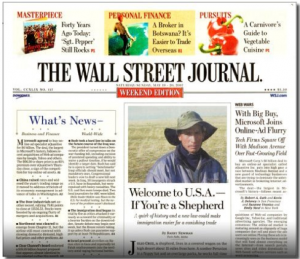
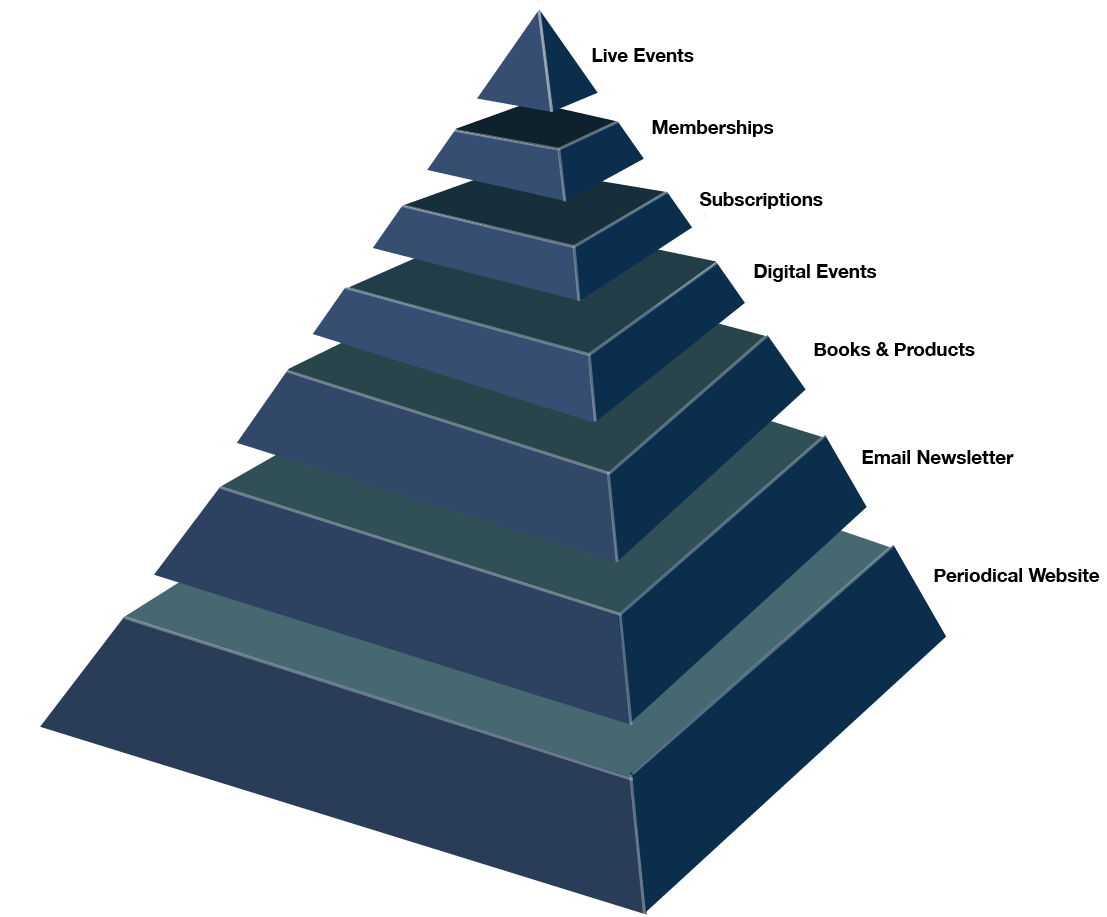

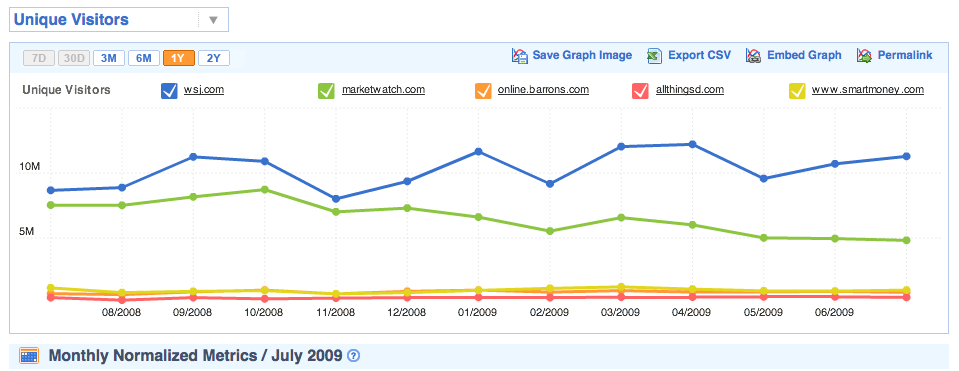
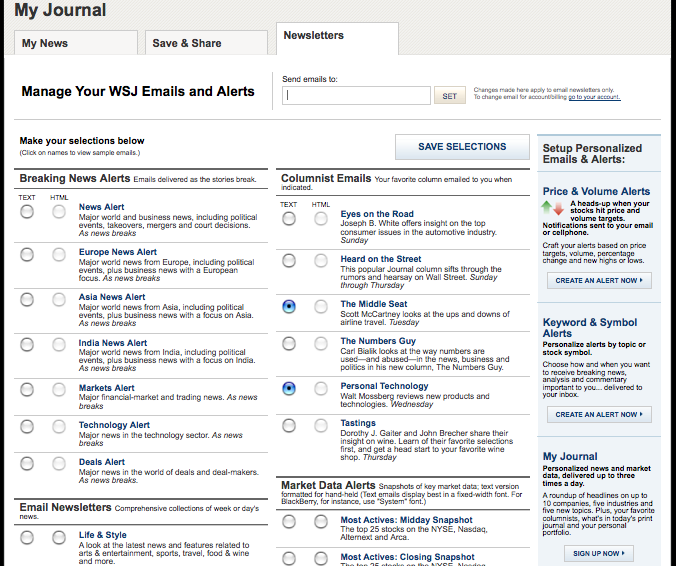




I am sorry, it not absolutely that is necessary for me. There are other variants?